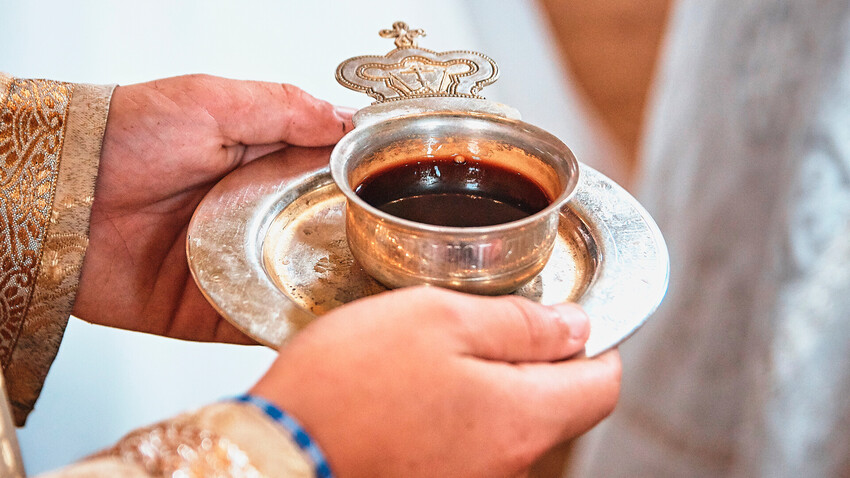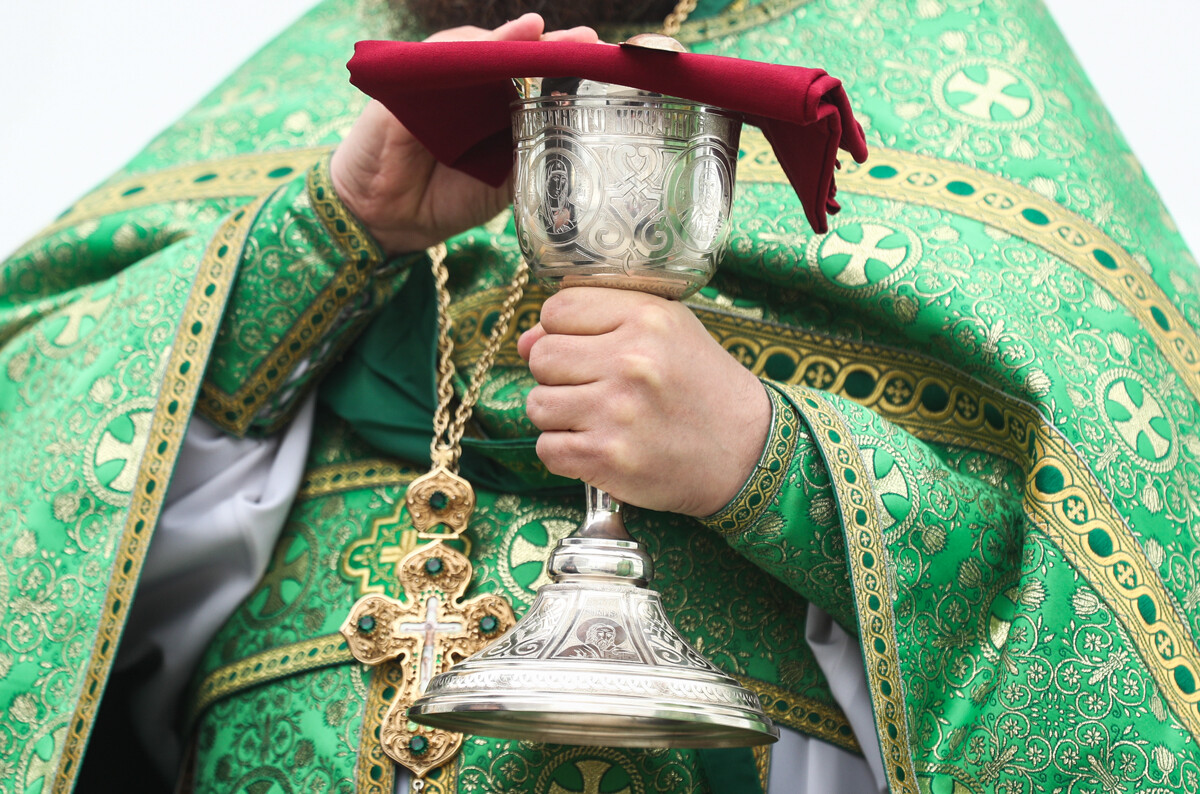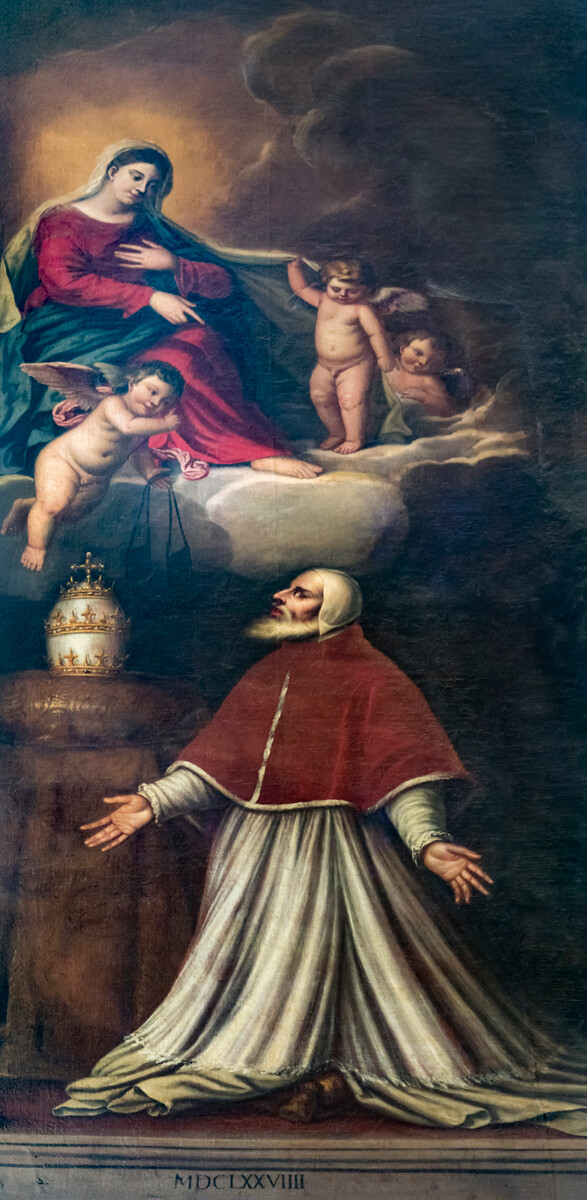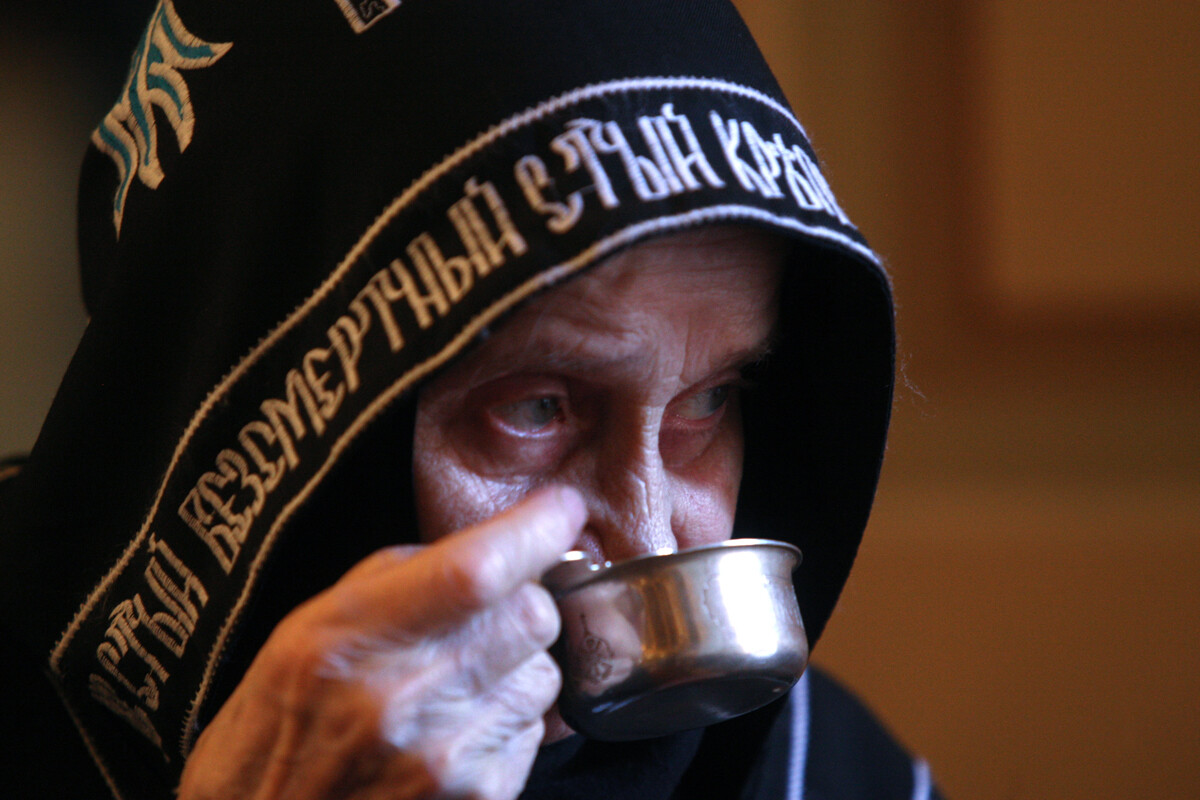
Orthodox Christians celebrate Christmas with this dark red wine.
Legion MediaExperts describe kagor as a full-bodied wine with a sweet, fruity taste that has hints of berries and chocolate. Even though it has such a sumptuous description, this wine was chosen for use in Orthodox Christian religious rites such as Communion, in which it’s utilized as the “Blood of Christ.”
The use of red wine in Communion, however, dates back to at least the 13th century in Russia, as testified to by the ancient historical chronicles. So, many centuries later, why did the Orthodox Church choose kagor for its rituals? Well, the answer owes to a number of factors and not only because of the wine’s rich taste.

According to Orthodox Church regulations, it’s only possible to use a non-sour grape wine for Communion that doesn’t contain sugar or herbal extracts. Kagor fits this description perfectly due to the usage of grape varieties with high sugar content.
In large part, sweet wine was chosen for practical reasons. Unlike Western Christianity, Russian Orthodoxy allows giving the “Blood of Christ” to children, who naturally prefer a sweeter taste instead of the usual bitterness that most red wines have. In addition, before it is sanctified by the Holy Spirit during the ritual and becomes the “Blood of Christ”, the priest dilutes the kagor with holy water; yet, the kagor’s inherent qualities allow it to retain its dark red color, which is important for performing the ritual. The “Blood of Christ” is given to the faithful in measured amounts, usually on a very small spoon.
The word “kagor” entered the Russian language under the influence of France where such a wine originated in the small town of Cahors, roughly 160 kilometers from Bordeaux, which of course is a city famous for wine-making. In the 17th and 18th centuries several varieties of grape were planted in Cahor that, in general, were not popular in Bordeaux. These varieties were Malbec, Merlot, and Tannat. This proved to be a shrewd business decision. Producing wine from these grape varieties allowed the town of Cahors to sell its own wine that wouldn’t compete, and hence irritate, the powerful wine-making families of Bordeaux.
With time, the red wine from Cahors began to be called by its locality – Cahors wine (or “kagor” in the Russian manner). Owing to its saturated ruby color, it was not even labeled a red wine, but rather, was listed as a “black wine”. With that being said, it was produced according to classic technology – by fermenting squashed black grapes. Kagor’s unique feature is that it’s produced from a limited number of varieties of well-ripened grapes with a sugar content of no less than 180 grams per liter.
In 1154, the marriage of France’s Eleanor of Aquitaine and England’s King Henry II was the major event that put the spotlight on this local wine when it amply flowed at the wedding feast. Another historical event – the election in 1316 of Jacques Duèze as Pope John XXII, who was a native of Cahors – also helped to make Cahors wine popular in Europe. Pope John XXII vigorously promoted this wine from his native region, claiming that it was the best wine for the sacred rituals of the mass.

Pope John XXII receives the scapular, 1679.
Scuola Grande dei Carmini/Public DomainCenturies later, disaster struck. At the beginning of the 20th century, local vines in the Cahor region suffered from invasive species, and the majority of vineyards were destroyed. Only half a century later were winemakers able to resurrect the production of Cahors wine. Finally, in 1971, the trademark “Cahors” was officially registered.
France is famous for its strict protection of agricultural products. Appellation d’origine contrôlée (AOC) is a label that identifies an agricultural product whose production and processing are performed in a specific geographical area – the terroir – and using established and traditional know-how. The honor to bear the name “Cahors wine” pertains only to red wine that is produced in the Cahors region, and it must consist of no less than 70% Malbec grapes, and 30% Merlot and Tannat.

For centuries before kagor became popular, Russia imported wines from Greece, Italy, and France for the needs of the Orthodox Church. According to one legend, however, Russian emperor Peter the Great was advised to drink kagor as medication for his stomach ulcer, and he liked the wine so much that it was imported into Russia in large quantities over the course of his reign.
Since the import and transportation of this wine from France was quite costly, in 1706, Peter the Great issued a decree ordering the planting of vineyards in the south of the empire (in the valley of the Don River), and invited foreign experts to develop and oversee wine making there. In 1733, the Holy Synod (the supreme governing body of the Russian Church in the imperial era) introduced a regulation to solely use kagor in religious sacraments. Henceforth, its official rituals, the Orthodox Church used both local kagor wines as well as that which was imported from France.
After the production of Cahors wine came to a halt in France in the early 20th century, the Russian version of the wine suddenly found itself in especially high demand. The year 1902 is considered to be the birth date of Russian kagor.

Moscow Inter-Republican Winery
Dmitry Korobeynikov/SputnikIn Russia, kagor was produced by mixing the cabernet sauvignon and saperavi grapes, but a different technology was used than in France. First, as part of the fermentation process the crushed grapes are heated and then cooled; this allows all the nutrients to transition into the freshly crushed grape juice. Next, the wine is produced by combining the fermented juice with 70% wine alcohol and concentrated grape syrup.
Then, the wine is aged in barrels for several years, which often results in the acquisition of a velvety taste that has a strong blackcurrant aroma. Some connoisseurs even discover hints of chocolate in them.
Kagor is given to the faithful during an Orthodox service, along with bread, to represent the blood and body of Jesus Christ. Outside of church rituals, you should pay attention to the fact that kagor is a sweet wine, and so, it’s a good match for sour desserts, fruit, dried fruit, and chocolate; it’s also good as a digestive. Finally, kagor pairs well with meat and vegetable dishes.
Dear readers,
Our website and social media accounts are under threat of being restricted or banned, due to the current circumstances. So, to keep up with our latest content, simply do the following:
Subscribe to our Telegram channels: Russia Beyond and The Russian Kitchen
Subscribe to our weekly email newsletter
Enable push notifications on our website
Install a VPN service on your computer and/or phone to have access to our website, even if it is blocked in your country
If using any of Russia Beyond's content, partly or in full, always provide an active hyperlink to the original material.
Subscribe
to our newsletter!
Get the week's best stories straight to your inbox